25+ SAMPLE Construction Management Agreement
-

Construction Management Agreement
download now -
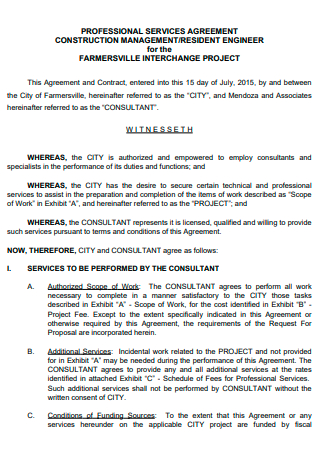
Construction Management Professional Services Agreement
download now -

Construction Management Continuing Services Agreement
download now -
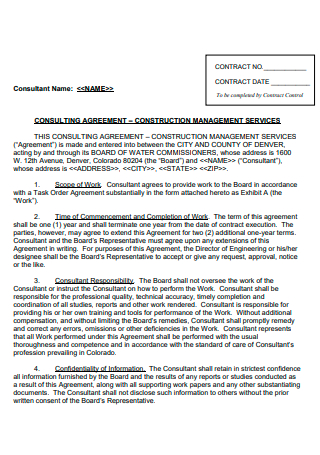
Construction Management Services Consulting Agreement
download now -
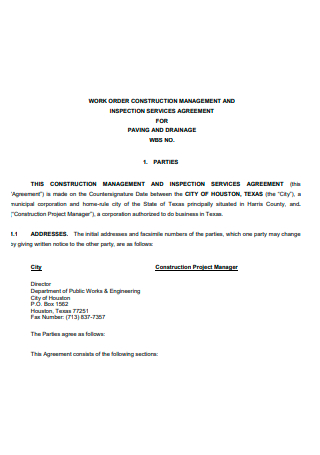
Work Order Construction Management and Inspection Services Agreement
download now -
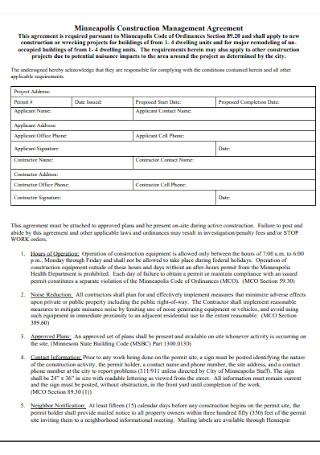
Sample Construction Management Agreement
download now -
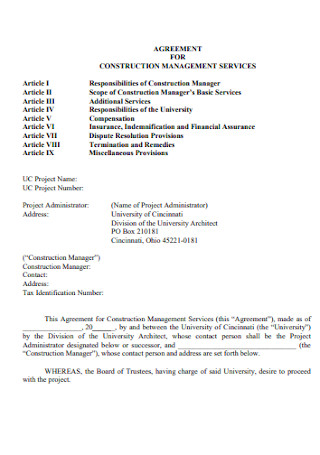
Agreement for Construction Management
download now -
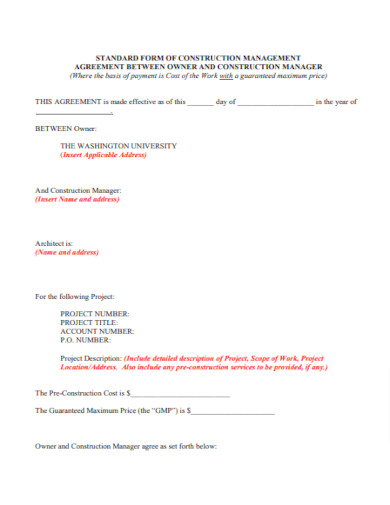
Construction Management Agreement Form
download now -
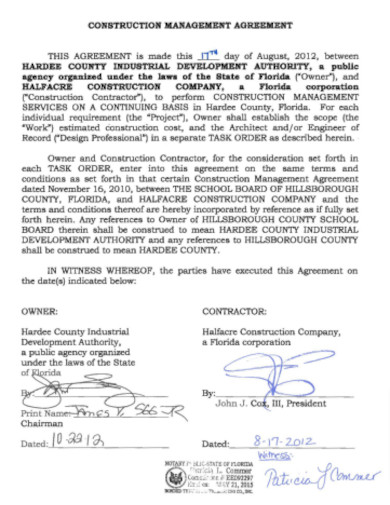
Halfacre Construction Management Agreement
download now -

Construction Management at Risk Agreement
download now -
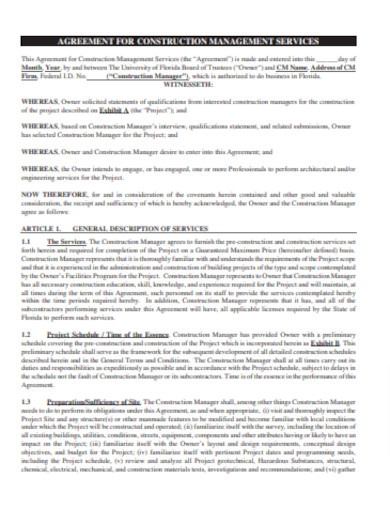
Construction Management Agreement Service
download now -
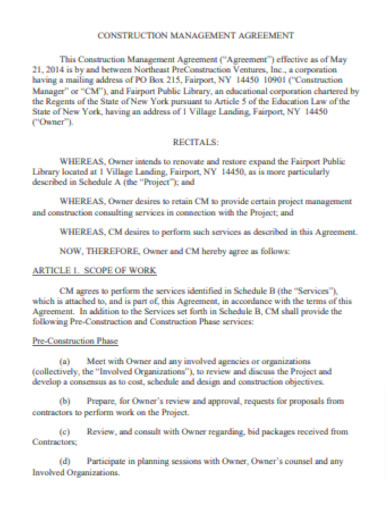
Simple Construction Management Agreement
download now -
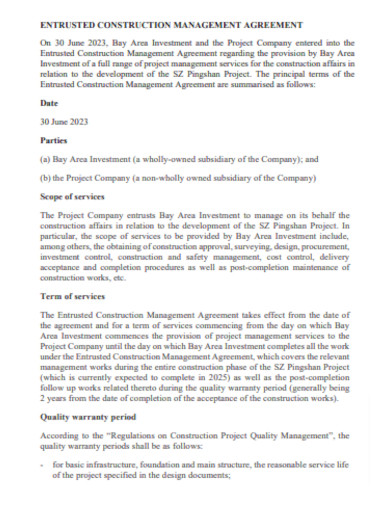
Entrusted Construction Management Agreement
download now -
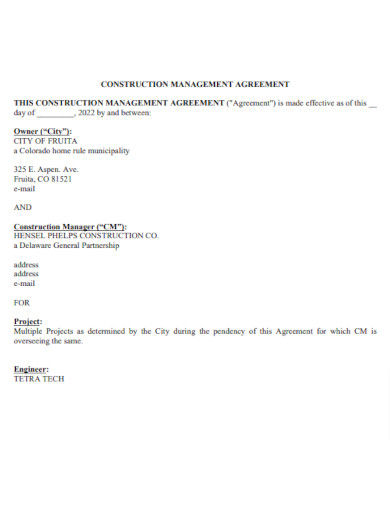
Editable Construction Management Agreement
download now -
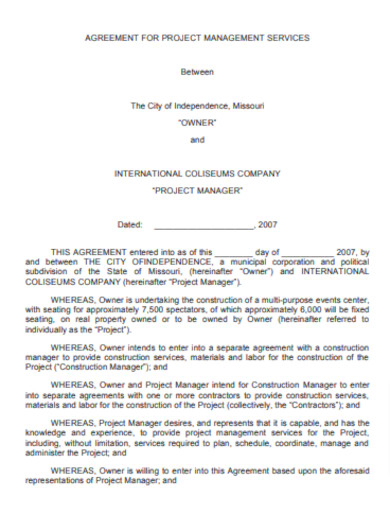
Construction Project Management Agreement
download now -

Construction Management Agreement Outline
download now -

Construction Manager Management Agreement
download now -
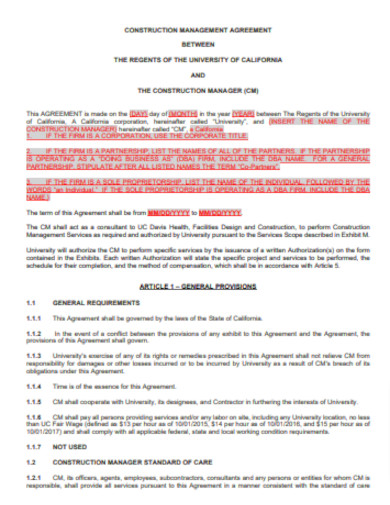
Printable Construction Management Agreement
download now -
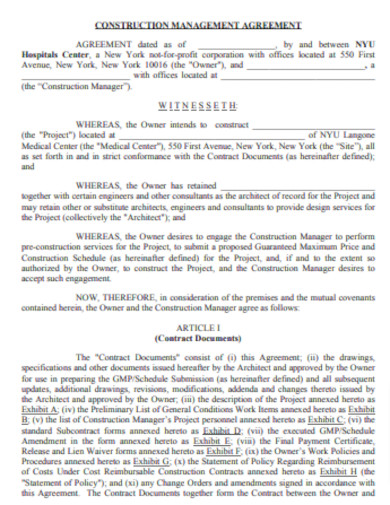
Construction Management Agreement Layout
download now -
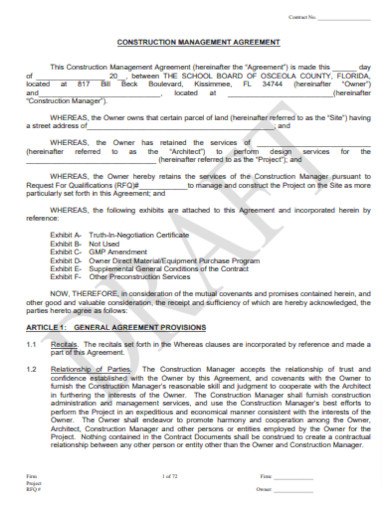
Construction Management Renovation Agreement
download now -

Basic Construction Management Agreement
download now -
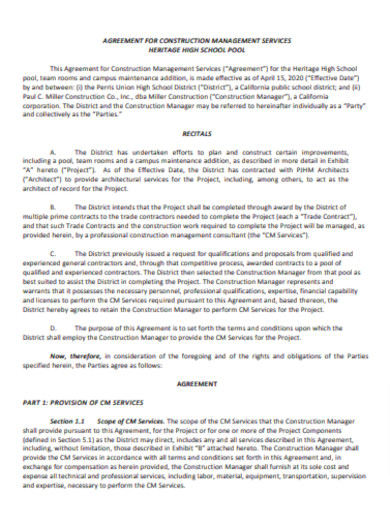
Agreement for Construction Management Service
download now -
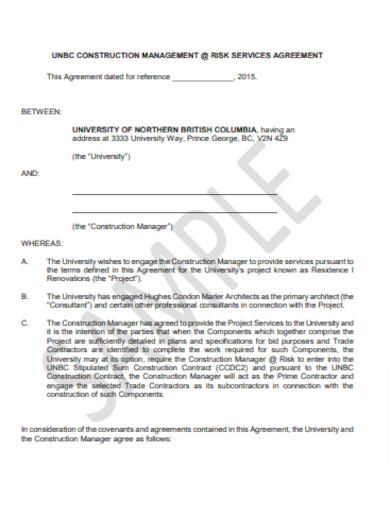
Construction Management Risk Service Agreement
download now -

Construction Management Agreement for Project
download now -
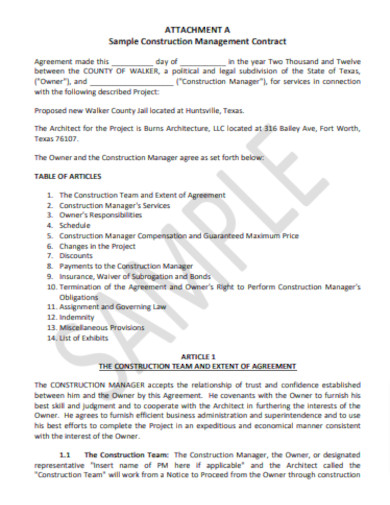
Construction Management Agreement Format
download now -
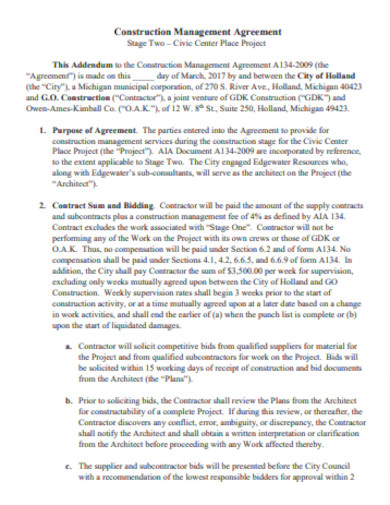
Standard Construction Management Agreement
download now
FREE Construction Management Agreement s to Download
25+ SAMPLE Construction Management Agreement
Definition:
Understanding the Construction Management Agreement:
Essential Components of the Agreement:
Benefits of a Well-Drafted Agreement:
Potential Pitfalls to Avoid:
Key Considerations Before Signing:
Embracing the Future of Construction Management:
What key terms should be included in this agreement?
How are dispute resolution methods stipulated within the agreement?
Can the agreement be modified once the construction project starts?
Why is outlining compensation terms crucial in a construction management agreement?
When should a construction management agreement be drafted and signed?
Definition:
A Construction Management Agreement is a binding contract between a construction manager (CM) and a project owner, detailing the CM’s roles, responsibilities, and compensation for overseeing a construction project’s planning, coordination, and execution. This essential document serves as a roadmap for project execution, promoting transparency, reducing risks, and establishing a clear scope of work, pivotal for successful project completion and stakeholder collaboration.
Understanding the Construction Management Agreement:
Diving deep into the intricacies of construction projects, one soon realizes the crucial role played by the Construction Management Agreement. This comprehensive guide serves as an essential primer for professionals, ensuring they’re well-versed with every facet of this significant document.
Essential Components of the Agreement:
Every construction management agreement, while tailored to specific projects, invariably encapsulates a few core elements:
Project Overview and Scope:
Defines the specific project, its location, objectives, and the expected outcome. It ensures all parties have a clear understanding of the project’s nature and extent.
Roles and Responsibilities:
Details the tasks, duties, and decision-making authority of the construction manager, establishing clear lines of accountability and reducing ambiguities in project management.
Compensation and Payment Terms:
Outlines the CM’s remuneration, whether it’s a fixed fee, cost-plus, or a percentage of the construction cost, and describes the payment schedule and conditions.
Duration and Timeline:
Specifies the project’s commencement and completion dates, including any milestones or critical path activities essential for timely project delivery.
Quality and Performance Standards:
Describes the quality benchmarks, construction standards, and performance metrics the project should adhere to, ensuring that the outcome aligns with the owner’s expectations.
Reporting and Communication Protocols:
Establishes how and when the CM will communicate updates, progress reports, and any issues to the owner or other stakeholders.
Safety and Compliance:
Highlights the importance of adhering to safety protocols, local construction codes, and other regulatory requirements, ensuring that the project meets all legal and safety standards.
Change Orders and Modifications:
Describes the process for handling changes in the project scope, budget, or timeline, ensuring that all changes are documented and approved by relevant stakeholders.
Dispute Resolution:
Details procedures for addressing disagreements or conflicts that may arise, typically incorporating mediation or arbitration as preferred methods before resorting to litigation.
Termination Clauses:
Outlines conditions under which the agreement can be terminated, be it due to breach of contract, unforeseen circumstances, or mutual consent, and the implications of such termination.
Confidentiality and Non-Disclosure:
Ensures that sensitive project information, trade secrets, or proprietary methods are protected from unauthorized disclosure.
Indemnification and Liability:
Establishes the CM’s liability in cases of negligence, errors, or omissions, and details the indemnity provisions protecting the project owner from potential legal claims.
Benefits of a Well-Drafted Agreement:
The right agreement is invaluable and offers a plethora of benefits:
Clarity and Transparency:
A comprehensive agreement ensures all parties involved understand their roles, responsibilities, and expectations, reducing ambiguities and potential misunderstandings.
Risk Management:
By defining the responsibilities and liabilities, it provides a framework to handle unforeseen challenges, thereby minimizing risks associated with project delays or cost overruns.
Legal Protection:
A well-drafted agreement serves as a binding legal document, safeguarding the interests of all parties. In case of disputes, it can be referenced in court or arbitration.
Financial Predictability:
By outlining compensation, payment schedules, and terms related to changes or additional services, it offers a clear financial roadmap, helping in budgeting and financial planning.
Streamlined Communication:
By setting communication protocols and reporting mechanisms, it ensures timely and efficient information exchange, keeping all stakeholders informed and aligned.
Enhances Accountability:
Clear delineation of duties and performance metrics ensures that each party is accountable for their specific tasks, promoting diligence and professionalism.
Conflict Resolution:
By incorporating dispute resolution clauses, it provides a predefined pathway to address and resolve conflicts, avoiding costly and time-consuming legal battles.
Promotes Trust and Collaboration:
Knowing that there’s a solid agreement in place fosters a sense of security, encouraging mutual trust and collaboration between the parties involved.
Efficiency in Operations:
A well-structured agreement serves as a reference guide throughout the project, aiding in decision-making, managing changes, and ensuring smooth project execution.
Protects Intellectual Property:
Incorporating confidentiality and non-disclosure clauses protects proprietary methods, designs, and other intellectual assets from unauthorized use or disclosure.
Flexibility in Adaptation:
With provisions for change orders and modifications, the agreement allows for flexibility, ensuring the project can adapt to changing circumstances or requirements.
Assures Quality and Safety:
By emphasizing compliance with safety protocols and quality standards, it ensures the final output aligns with the owner’s expectations and meets industry benchmarks.
Potential Pitfalls to Avoid:
Like any contractual commitment, there are potential pitfalls one should be wary of:
Ambiguity in Language:
Using vague terms can lead to misunderstandings. It’s crucial to use clear and concise language to avoid any misinterpretations.
Omission of Essential Clauses:
Neglecting important clauses like dispute resolution, termination, or change order procedures can complicate matters if issues arise.
Overlooking Confidentiality:
Not including confidentiality or non-disclosure clauses might expose sensitive information, jeopardizing business interests.
Lack of Termination Clauses:
Not detailing the grounds and processes for terminating the agreement can leave parties trapped in an unproductive relationship.
Missing Dispute Resolution Mechanisms:
Omitting a structured approach to handle conflicts can escalate issues, leading to costly and time-consuming legal battles.
Underestimating Project Risks:
Not addressing potential risks or not having clauses to manage unforeseen challenges can derail the project’s progress.
Bypassing Compliance and Safety:
Neglecting to emphasize compliance with local regulations, permits, or safety standards can result in legal issues and endanger workers.
Over-reliance on Templates:
While templates can be a good starting point, solely relying on them without customization might not address project-specific needs or nuances.
Key Considerations Before Signing:
Before putting pen to paper, it’s essential to review a few critical aspects:
Comprehensive Understanding:
Ensure that all parties fully grasp the terms, responsibilities, and expectations detailed in the agreement. This eliminates future disputes stemming from misunderstandings.
Scope of Work:
Review the defined scope meticulously to confirm it aligns with the project’s goals and does not leave out critical tasks or include undesired ones.
Payment Terms:
Evaluate the payment structure, timelines, and any conditions tied to payments. Understand when and how compensation will be rendered.
Termination Clause:
Know under what conditions the agreement can be terminated, the implications of doing so, and any associated penalties.
Liability and Insurance:
Identify who bears responsibility in case of damages or accidents. Confirm that insurance coverage is adequate for potential risks.
Review by Experts:
Before signing, consider having the agreement reviewed by a legal professional or industry expert to highlight any potential oversights or red flags.
Flexibility and Amendments:
Check how flexible the agreement is in accommodating future changes and how such amendments will be incorporated.
References and Background Checks:
Consider conducting a background check or seeking references for the other party, ensuring their credibility and capability.
Financial Health:
Especially in long-term projects, evaluate the financial stability of the parties involved to ensure they can fulfill their obligations throughout the project’s duration.
Embracing the Future of Construction Management:
As the construction landscape continually evolves, staying updated with the latest trends in construction management agreements is vital. Incorporating technology, emphasizing sustainability, and leveraging data analytics are reshaping agreements and the very essence of construction management.
Digital Transformation:
Incorporating modern software and technology, such as Building Information Modeling (BIM) and Artificial Intelligence (AI), into construction management processes ensures more efficient planning, real-time collaboration, and predictive analysis.
Sustainability and Green Building:
Embracing eco-friendly construction methods and materials is not just an ethical choice but also a value proposition. LEED certification and sustainable practices can enhance a project’s marketability and long-term value.
Modular and Prefabricated Construction:
This approach, where parts of the building are manufactured off-site and assembled on-site, promises reduced construction times, lower costs, and improved quality control.
Wearable Technology:
From smart helmets with augmented reality to exoskeleton suits for laborers, wearable tech is set to revolutionize on-site safety and efficiency.
Drones and Robotics:
Drones offer aerial views for site inspections, ensuring accurate site evaluations. Robotics, on the other hand, can automate repetitive tasks like brick-laying, reducing labor costs and errors.
3D Printing:
Emerging as a game-changer, 3D printing in construction enables rapid prototyping and even the creation of complex building elements, ushering in a new era of design freedom and efficiency.
Virtual Reality (VR) and Augmented Reality (AR):
These technologies allow stakeholders to visualize the finished project before it’s built, making client communications and design approvals more seamless.
Data Analytics and Machine Learning:
Harnessing big data can provide insights into optimizing construction processes, predicting potential delays, and ensuring better resource allocation.
Advanced Training Programs:
With the influx of new technologies, continuous training programs will be paramount. Virtual reality safety training or machine operation simulations can prepare workers more effectively than traditional methods.
Integration of IoT:
The Internet of Things (IoT) facilitates real-time monitoring of equipment, inventory management, and predictive maintenance, all crucial for modern construction sites.
Collaborative Platforms:
Cloud-based platforms enable real-time collaboration among architects, engineers, and construction managers, ensuring everyone is on the same page, reducing errors and miscommunications.
Customer-Centric Approaches:
Using tools like AI chatbots for client interactions or VR walkthroughs for client approvals can enhance the customer experience, ensuring higher satisfaction and loyalty.
What key terms should be included in this agreement?
In a Construction Management Agreement, key terms should encompass scope of work, responsibilities of the construction manager, payment terms, project schedule, insurance requirements, dispute resolution mechanisms, confidentiality clauses, termination conditions, safety and compliance standards, and provisions for amendments. These components ensure clarity, protect parties involved, and provide a roadmap for the project’s execution.
How are dispute resolution methods stipulated within the agreement?
Within the Construction Management Agreement, dispute resolution methods are explicitly outlined, detailing procedures like negotiation, mediation, arbitration, or litigation. The agreement specifies conditions triggering these methods, preferred venues, responsible parties for costs, and time frames for raising disputes. By setting these parameters, parties aim for efficient, timely, and fair resolution of potential conflicts during the project’s lifecycle.
Can the agreement be modified once the construction project starts?
Yes, the Construction Management Agreement can be modified after the construction project starts, typically through mutual consent of involved parties. Amendments or modifications are documented in writing, signed, and appended to the original agreement. Reasons for changes might include unforeseen circumstances, project scope alterations, or revised expectations. It’s essential to address modifications transparently to maintain trust and smooth project progression.
Why is outlining compensation terms crucial in a construction management agreement?
Outlining compensation terms in a construction management agreement is crucial to establish clarity on payment structures, rates, and schedules, ensuring both parties understand financial obligations. It prevents disputes, fosters trust, and provides a clear framework for budgeting and financial planning. Clear compensation terms also ensure timely remuneration and maintain positive cash flow, which is vital for project continuity and success.
When should a construction management agreement be drafted and signed?
A construction management agreement should be drafted and signed before any work commences. This ensures both parties are on the same page regarding expectations, roles, responsibilities, and compensation. An early agreement protects interests, sets the project’s foundation, and helps preempt potential conflicts, ensuring a smoother workflow and fostering trust and understanding from the project’s outset.
In Conclusion, the Construction Management Agreement is more than a mere contract; it’s the roadmap guiding each phase of a construction project. Ensuring transparency, defining responsibilities, and establishing timelines, it remains indispensable in modern construction practices. For a deeper dive into the nuances of construction contracts and efficient project management, delve into our expansive library of construction-focused articles and resources.
